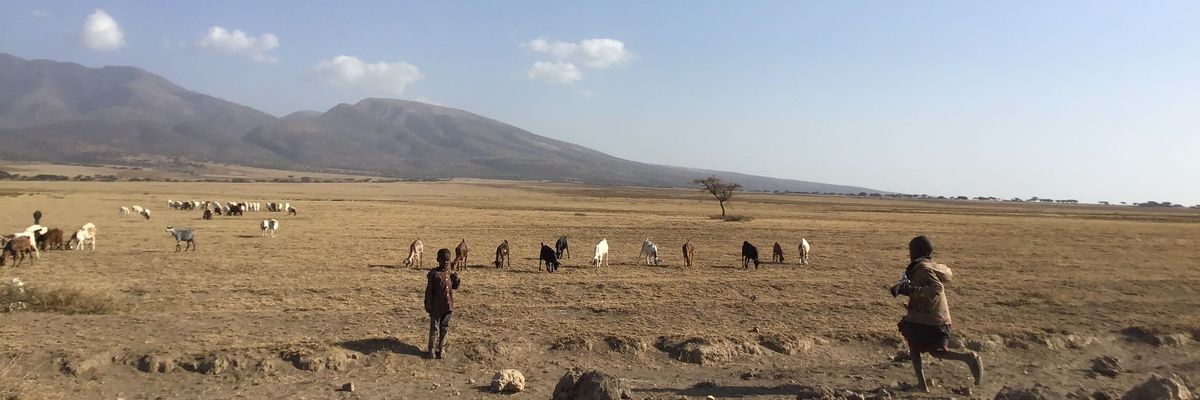Livestock are a vital component of both the African food system and rural livelihoods. The continent has around 400 million cattle alone, and the livestock sector accounts for a significant 30-40% of the total agricultural gross domestic product across the continent.
Small amounts of meat, milk and eggs can have life-changing benefits in tackling malnutrition, and these animals also provide a reliable income source when alternatives simply do not readily exist.
Yet, from an environmental perspective, livestock are often perceived only as a problem, contributing to habitat loss, greenhouse gas emissions, and land degradation. This narrow view can hold back much-needed finance into the sector, yet it misses a much more nuanced reality.
International climate finance should prioritise support for sustainable livestock systems, recognizing their unique role in tackling broad environmental challenges while providing food, livelihoods, and economic growth.
As the United Nations prepares for three major environmental meetings over the next few months—on
biodiversity conservation, climate change, and land management, respectively—it is important for the world to rethink how it perceives livestock in the context of development progress, and to begin to see such animals as cows, goats, camels, and pigs as “solutions with legs” in combating these intensifying climate and environmental crises at scale.
For countries like Kenya, where livestock is deeply embedded in livelihoods and culture, it is critical for U.N. meetings to see these farm animals from our perspective and help channel climate and biodiversity finance into their potential as a force for good.
Firstly, contrary to popular belief, livestock
can be powerful agents of biodiversity conservation when managed correctly. Well-managed grazing systems help maintain ecosystems, control invasive species, and foster the regeneration of diverse native plant life in degraded areas. Pastoralist communities in Kenya, from the Maasai to the Samburu, have long understood this, using livestock grazing as a tool to balance ecosystems and promote biodiversity while providing essential sources of income and producing almost 20% of Kenya’s milk.
And in many conservancies, livestock are intentionally integrated into wildlife conservation strategies. Cattle are grazed rotationally, mimicking natural patterns seen in wild herbivores like zebras and gazelles. This approach helps prevent overgrazing, maintains healthy grasslands, and supports both livestock and wildlife populations.
Secondly, in terms of climate action, the role of livestock is often framed solely around their methane emissions, particularly in the case of ruminant animals like cattle. However, the potential for livestock to contribute to climate solutions is much broader, particularly in places like Africa.
In terms of mitigation, improved rangeland management and the adoption of climate-smart feeding practices can significantly reduce livestock-related emissions. For instance, integrating climate-resilient forages into grazing systems improves both productivity and environmental outcomes.
Moreover, sustainable grazing practices can play a crucial role in lowering the emissions intensity of meat and dairy production through carbon sequestration. Rangelands, often considered wastelands, are actually some of the planet’s largest carbon sinks. When managed properly, they store significant amounts of carbon in their soils, and proper management can contribute as much as
20.92 gigatons of climate mitigation by 2050.
On the adaptation front, livestock are a critical lifeline for communities facing increasing climate variability, including in Kenya’s arid and semi-arid lands. By moving their livestock across landscapes in response to rainfall variability, pastoralists effectively manage scarce resources while avoiding overgrazing.
This adaptive mobility, coupled with the use of Indigenous livestock breeds adapted to harsh climates, provides a critical buffer against droughts and other climate stresses—even more so when
index-based livestock insurance is available. The East African Zebu cattle, for example, are better equipped to survive on limited, poor-quality forage in dry conditions, making them crucial to climate resilience in Kenya.
Lastly, as the global land degradation crisis worsens, it is becoming increasingly clear that sustainable livestock management can be a tool for land restoration and rehabilitation. Somewhere between 25% and 35% of rangelands globally suffer from some form of degradation. If left unattended, they become unproductive, reducing food security and driving people to abandon rural areas. Livestock systems
can actually help reverse this trend by promoting soil health and regenerating landscapes.
Sustainable grazing practices, including rotational grazing and controlled stocking densities, allow grasslands to recover and restore soil fertility. By moving livestock strategically across the land, these practices prevent overgrazing and promote the growth of deep-rooted plants, which stabilise the soil and improve water retention. Furthermore, healthy rangelands support a wide variety of plant species, protect watersheds, and improve overall ecosystem resilience.
Which begs the question, if livestock are so critical to all these environmental issues, why does the sector
receive so little funding? International climate finance should prioritise support for sustainable livestock systems, recognizing their unique role in tackling broad environmental challenges while providing food, livelihoods, and economic growth.
Livestock are not the enemy in this fight. Rather, they are an integral part of the solution, especially in places like Africa where pastoralist and livestock-keeping communities depend on them for survival.
